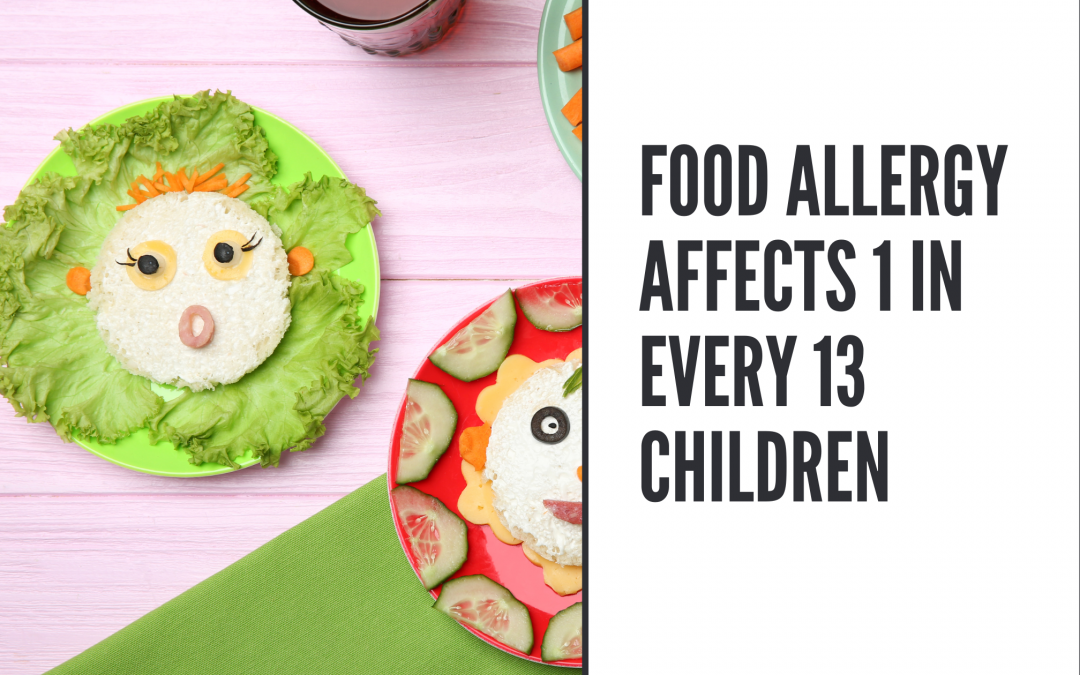More than 32 million Americans live with a potentially life-threatening food allergy. Is your special needs child among them? One in every 13 children has a food allergy. That’s about 2 in every U.S. classroom.
Food Allergy Awareness Week takes place May 8-14. So, we think it is a good subject for this month’s blog.
What Is a Food Allergy?
Every three minutes, someone goes to the emergency room because they have a severe allergic reaction to food.
Our bodies have immune systems to fight off infections. “Food allergies” happen when your child’s immune system decides that a certain food is “dangerous.”
Eggs, fish, milk, peanuts, shellfish, soy, tree nuts, and wheat. They sound harmless.
But, in the U.S., these are the eight most common food allergens! Why these? Science doesn’t know. Yet.
We pulled this description off the University of Rochester Medical Center website:
“Your child’s immune system sends out immunoglobulin E (or IgE) antibodies. These antibodies react to the food and cause the release of histamine and other chemicals. These chemicals can cause hives, asthma,
itching in the mouth, trouble breathing, stomach pains, vomiting, or diarrhea.”
And sadly, it doesn’t take much of the food to cause a severe reaction in highly allergic children.
Again pulling from a medical website, this time the Mayo Clinic:
“For a minor allergic reaction, prescribed antihistamines or those available without a prescription may help reduce symptoms. These drugs can be taken after exposure to an allergy-causing food to help relieve itching or hives. However, antihistamines can’t treat a severe allergic reaction.
For a severe allergic reaction, you may need an emergency injection of epinephrine and a trip to the emergency room. Many people with allergies carry an epinephrine auto injector (Adrenaclick, EpiPen). This device is a combined syringe and concealed needle that injects a single dose of medication when pressed against your thigh.”
Precautions
There is no cure for a food allergy. You manage it by:
? Staying away from the problem food.
? Learning to recognize and treat reactions & symptoms.
? Being a partner with your child. Teach him or her about the allergies. And include any of their close friends if you can. They are extra eyes and ears to look out for your child’s well-being.
? Having your child wear a medical alert bracelet.
? Making sure that anyone who comes into daily contact with your child is aware of their allergies. This includes family, friends, teachers, medical staff, therapists, and so on.
Food Allergy Card
With COVID pandemic restraints easing up, more people are returning to socializing in the community. That includes eating at restaurants.
So, think about having food allergy cards!
Give one to the waiter or waitress as you place your breakfast, lunch, or dinner order. This card lists the exact foods your child has allergies with. Using a computer, printer, and a heavier cardstock paper, you can create these yourself.
You might also want to ask about cooking surfaces, oils, and utensils used to make your child’s meal. You don’t want these items to have touched foods your child needs to avoid.
Isn’t your child’s health worth the peace of mind and the small expense?
Food Allergy Awareness Week
The Food Allergy Research & Education (FARE) organization is offering a daily schedule of events during Food Allergy Awareness Week. The goal is to encourage Americans to learn more about food allergies. Check out these fun activities.
This post was written by Anthony M Scialis. Find him here.

